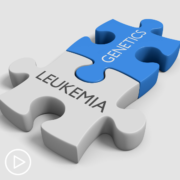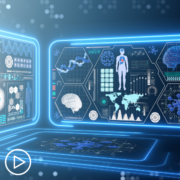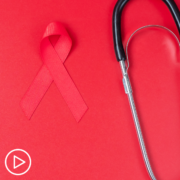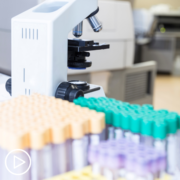What Are the Phases of AML Therapy?
What Are the Phases of AML Therapy? from Patient Empowerment Network on Vimeo.
Dr. Eytan Stein discusses the phases of AML treatment, defining induction therapy, consolidation therapy, and maintenance therapy.
Dr. Eytan Stein is a hematologist oncologist at Memorial Sloan Kettering Cancer Center and serves as Director of the Program for Drug Development in Leukemia in Division of Hematologic Malignancies. Learn more about Dr. Stein, here.
Related Resources:

|

|

|
Transcript:
Katherine Banwell:
What is induction therapy?
Dr. Eytan Stein:
Yeah, so induction chemotherapy refers really to a type of chemotherapy that tends to be quite intensive, so strong chemotherapy that patients receive in the hospital setting. That induction chemotherapy typically requires a hospitalization of three to four weeks, sometimes a little bit longer, as the patient gets their treatment during the first week or so and then they’re recovering from the effects of that treatment during the next three weeks in the hospital.
Katherine Banwell:
Okay. What is consolidation therapy?
Dr. Eytan Stein:
Ah. So, a patient first gets induction chemotherapy. If they achieve a complete remission, so their disease goes away, that’s great. We know their disease seems to be gone. But we also know that patients relapse. So, if patients relapse, it means their disease wasn’t really gone. It’s just that we couldn’t find it. It was hiding somewhere.
So, consolidation chemotherapy is chemotherapy that is given after a patient is in complete remission in an effort to kill any residual leukemia cells that may be hiding in the body, that we can’t see in our bone marrow biopsies, in an effort to deepen the remission that we’ve achieved during induction.
Katherine Banwell:
Okay. Are there any other terms that patients should be familiar with?
Dr. Eytan Stein:
There are. You know, there are a lot of other terms that patients should be familiar with. I’ll just touch on one because it can get complicated. We now have for acute myeloid leukemia, a type of therapy that goes beyond induction and consolidation called maintenance therapy.
Maintenance therapy is when a patient is done with induction, done with consolidation, and the question is, can you give them something that is easy to take, relatively non-toxic, that they can take for a prolonged period of time, to also help prevent relapse? Maintenance therapy has been really a backbone of the treatment of a different kind of leukemia called acute lymphoblastic leukemia, which happens primarily in children for many years. Maintenance therapy is also now a backbone of therapy for a different kind of blood cancer called multiple myeloma. And very recently, only within the past year to two years, we’ve incorporated maintenance therapy for AML for certain groups of patients.










